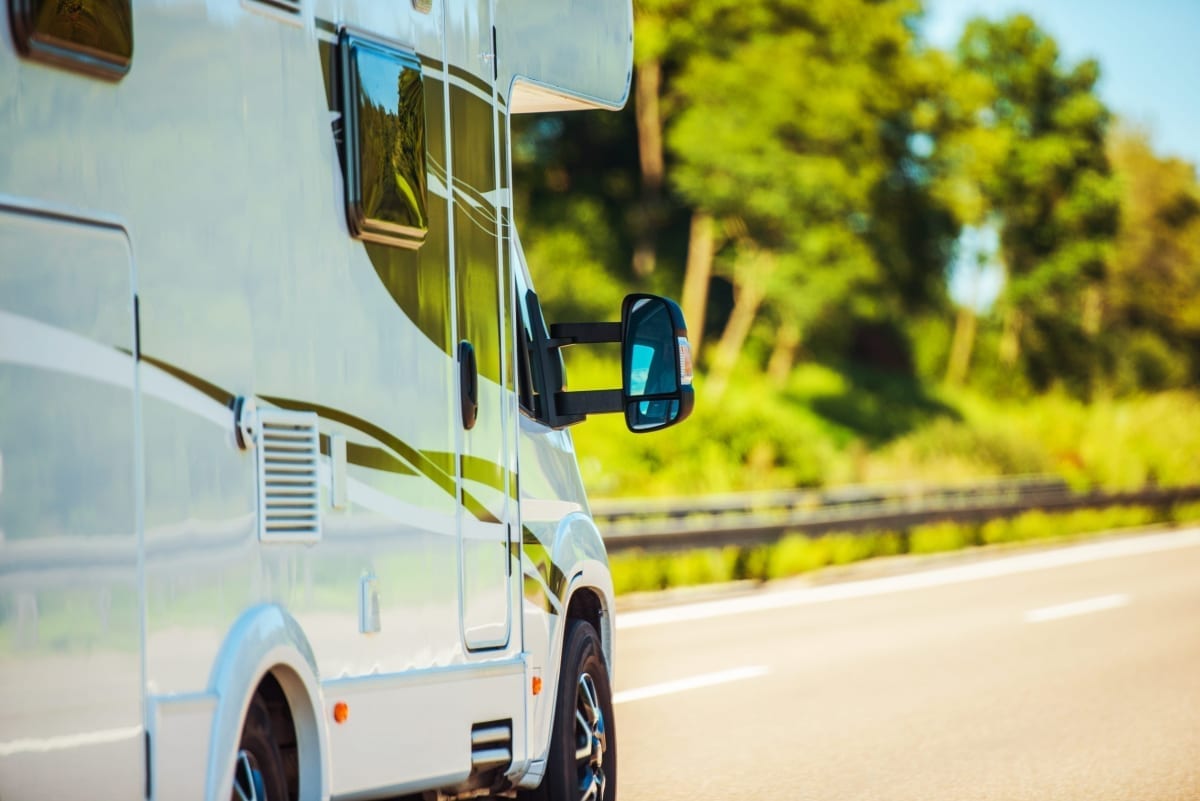As I headed off on spring break, taking my first trip in a Class C RV for the 600-mile trek from Ann Arbor, MI to Fredericksburg, VA, I did slightly fear the 8–9 miles per gallon anticipated by hauling a tiny house on wheels.
We left before dawn. Once I got to the steady pace of the Ohio Turnpike, traffic started to pick up; hardly heavy, but not the open road I had enjoyed for the first hour of my ride. By 6 a.m., I was joined by several semi-tractor trailers hauling their loads along the same easy stretch of road as me.
Then I had an idea! How much fuel economy improvement can I experience if I tailgate one of these truckers?
It didn’t take long for me to connect with a driver. He was comfortably travelling at 70 mph, and that was about all I wanted to push our rented RV. First, I measured my following distance by the hash lines which separated the lanes. I determined that about three of them divided the rear end of his trailer and my front bumper.
The driver tried to slow down to let me pass, but quickly realized what I was up to! I stayed somewhat dangerously in his blind spot, but eventually he accepted me. I had chosen to place my vehicle in harms way, in the name of saving a few gallons of gas. I was also motivated to fulfill my scientific curiosity and experience first-hand the benefit of the phenomenon known as platooning.
Our two vehicles were now in sync, like a ballet. He would put on his turn signal, and I would follow. Our paths looked as if we were connected. The amount of driver engagement I experienced was like none I had managed in recent memory. At least not since I took driver training a few decades ago, or the first time I drove with my newborn child in a car. I was tempted to enjoy the red sunrise as I headed east, but no, that would distract me from this ride and my mission to increase my fuel economy.
I was able to follow him this way just before Cleveland to the end of the Ohio turnpike. That’s where my host exited at I-76, and I continued on I-80. As I passed him, we each looked at each other, waved, and smiled. We had formed a bond, one of trust and friendship. My average fuel economy had gone from 8.5 to 9.1 mpg during the time we platooned; even with my understanding of aerodynamics, I was impressed.
The PA Turnpike wasn’t so friendly. It was far curvier, and the traffic had picked up. Unlike my recent experience, these new truckers only wanted to play leap frog, and that was okay with me. Rightfully so, I knew that what I had done earlier wasn’t safe, and it surely wasn’t smart to do now with the congestion, curves, and frequent exit and entrance ramps in Pennsylvania.
I share this story to bring to the forefront the concept of driver controllability. In Pennsylvania, I made the conscious decision that the time and place was not safe for the driving maneuver I desired to pursue. I took acceptance of the responsibility of driver control. Meaning I accepted that as a human behind the wheel of a several thousand-pound machine, I had a responsibility to operate it safely through the utmost in attentiveness or by foregoing increasing the exposure of a hazardous event and not saving on fuel economy.
While every driver is not an engineer who has specialized in functional safety, in our hazard analysis and risk assessment (HARA) we should not be afraid of rating an event as driver controllable because they probably have a cell phone nearby or can be expected to frequently tailgate. It is my opinion that poor behaviors as operators are not foreseeable misuses, but that instead foreseeable misuse applies to using a system in a manner for which it was not intended.
The responsibility of not being in control of a vehicle always lives with the operator (when one is actually in the driver’s seat). The ISO 26262 standard allows us to move forward with the assumption that controllability should not lie with the attentiveness of the operator but instead with how the environment and malfunction affect the controllability of a driver with average skills.
Wishing you all safe travels!

